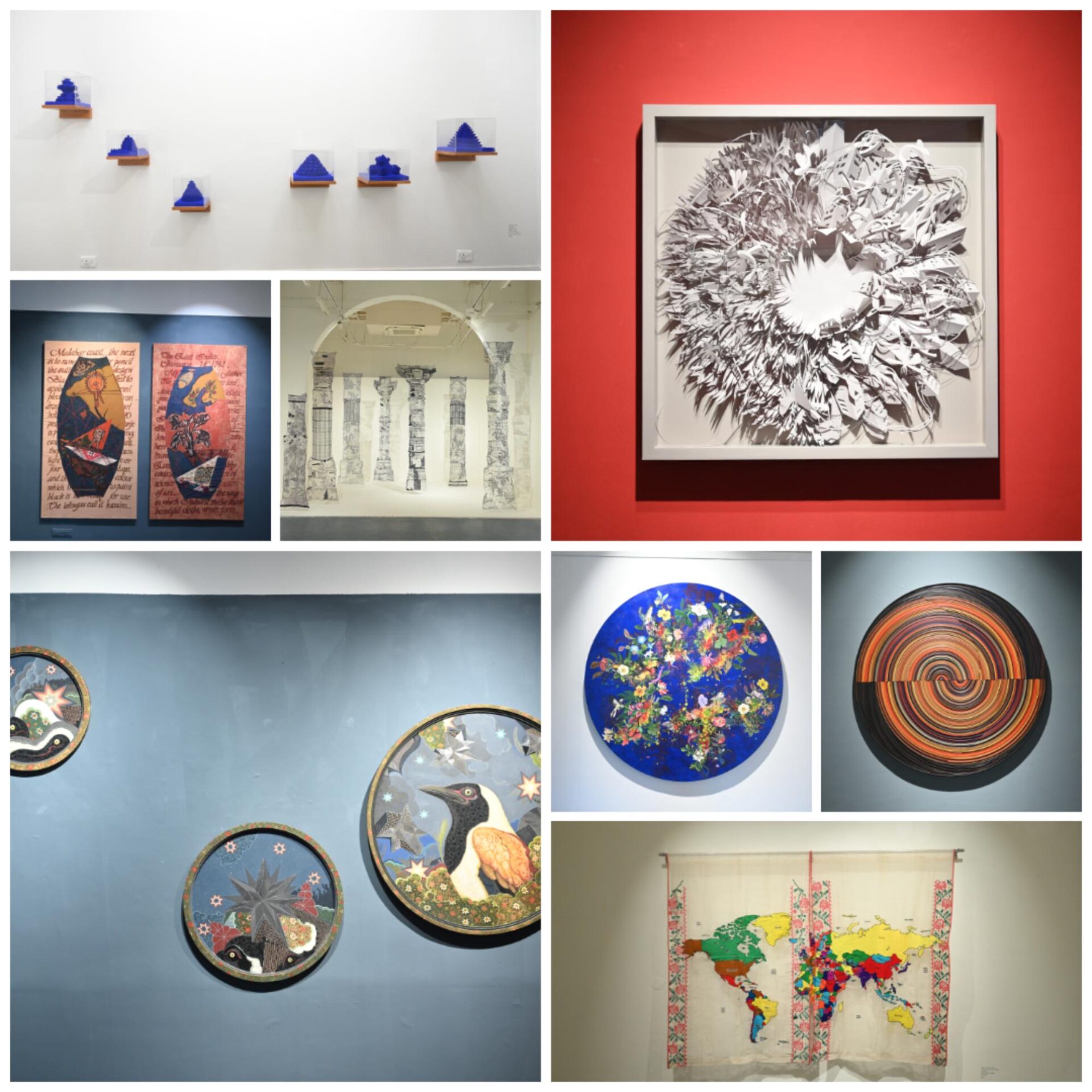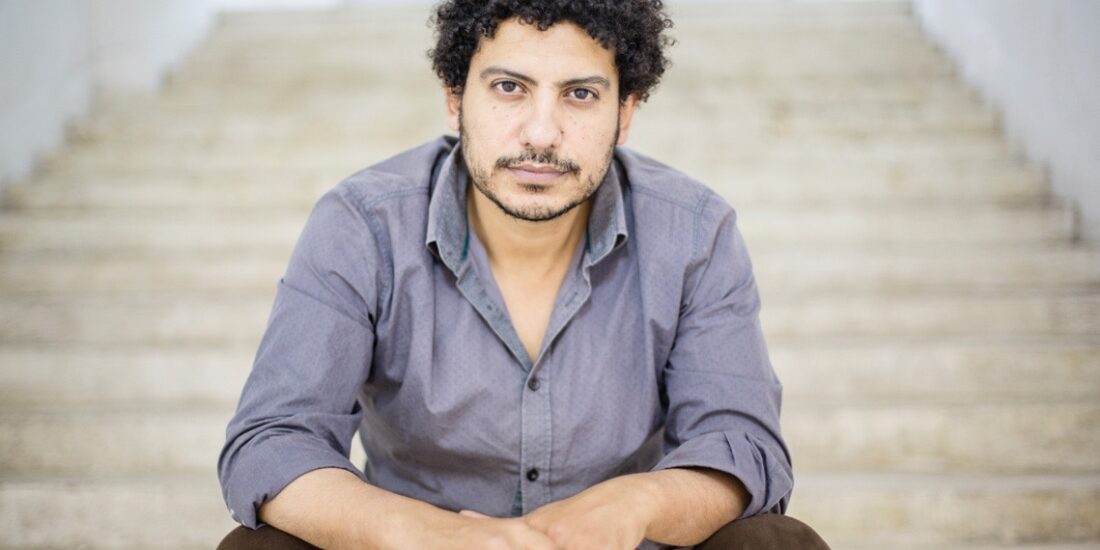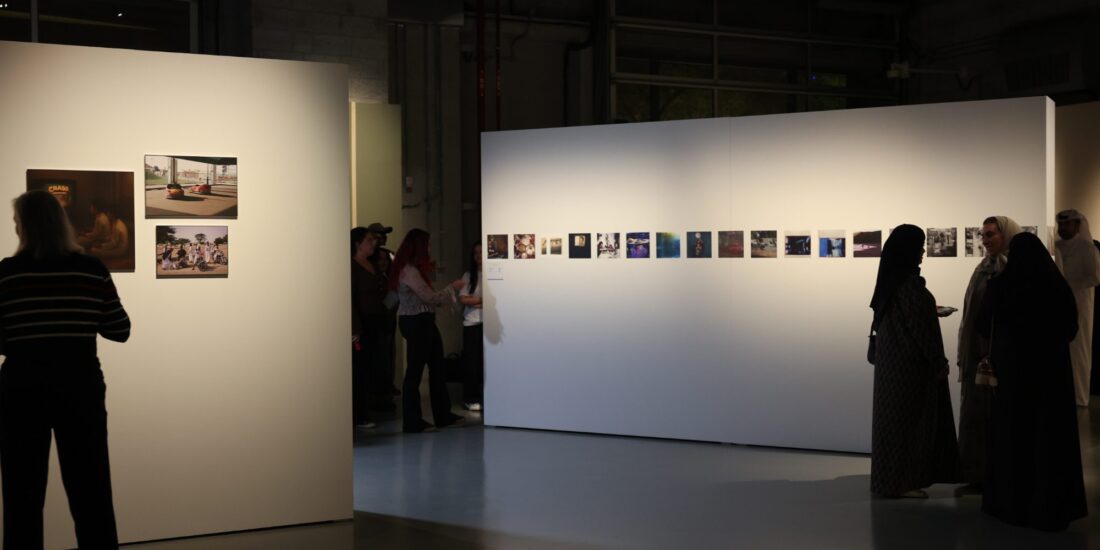Shared Worlds at Bikaner House Brings 30 Artists in Dialogue
In August 2025, the CCA Building at Bikaner House, New Delhi, became the site of a vibrant convergence. “Shared Worlds”, curated by Deeksha Nath, brought together more than 30 contemporary artists in an expansive group exhibition marking 15 years of Exhibit 320.
 From the moment visitors stepped into the space, the show unfolded as a dense, multi-layered conversation, paintings, sculptures, installations, photographs, and living arts in proximity, sparking connections across generations, mediums, and geographies.
From the moment visitors stepped into the space, the show unfolded as a dense, multi-layered conversation, paintings, sculptures, installations, photographs, and living arts in proximity, sparking connections across generations, mediums, and geographies.
Established in 2010, Exhibit 320 quickly became a site for concept-driven, materially rich contemporary practice from India and the subcontinent. Its programming has spanned solo and group exhibitions, discursive events, and long-term collaborations, working with both established names like Devraj Dakoji and Gopi Gajwani and emerging voices like Richa Arya and Deepak Kumar.
As a founding member of Delhi Contemporary Art Week, the gallery has played a role in building a more connected and critically engaged regional art ecosystem, with a consistent presence at India Art Fair, Art Dubai, and Art Basel.
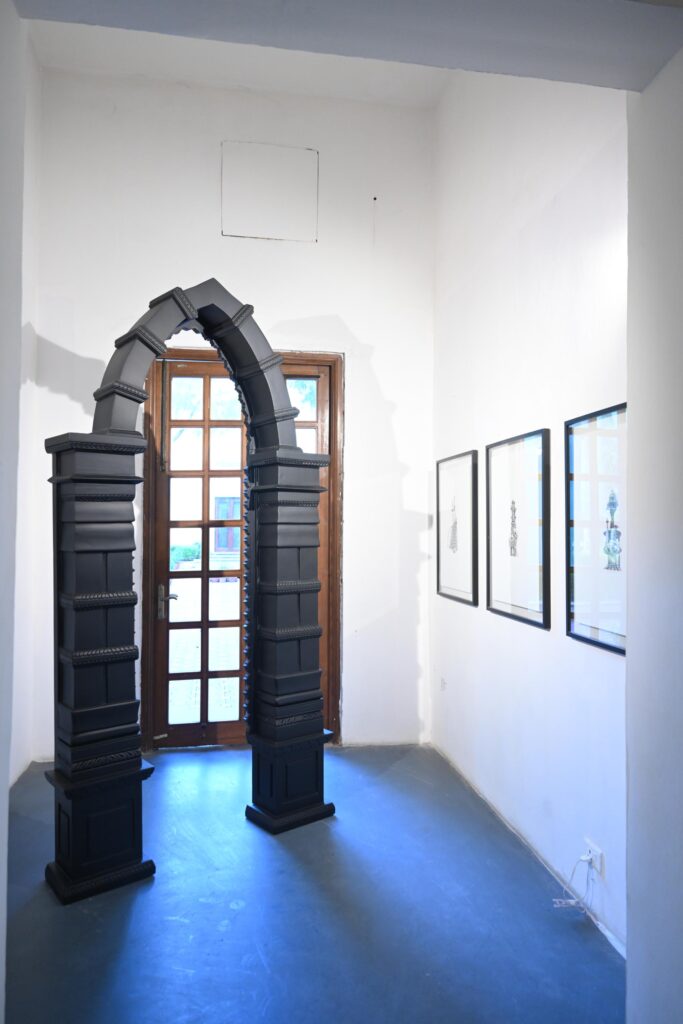
Skewed Histories (S1) by Ayesha Singh. Mango wood, 122 kg each (approximately), Edition 2 of 3, 108 x 56 1/2 x 10.6 inches, 2023.
Far from a singular curatorial thesis, Shared Worlds embraced multiplicity. As Deeksha Nath observed, “The exhibition resists the closure of fixed narratives. Instead, it proposes the exhibition space as a terrain of inquiry, where artists operate not just as makers but as interlocutors of their time… The works hold space for contradiction, transformation, and care.”
An Open Framework for Multiplicity
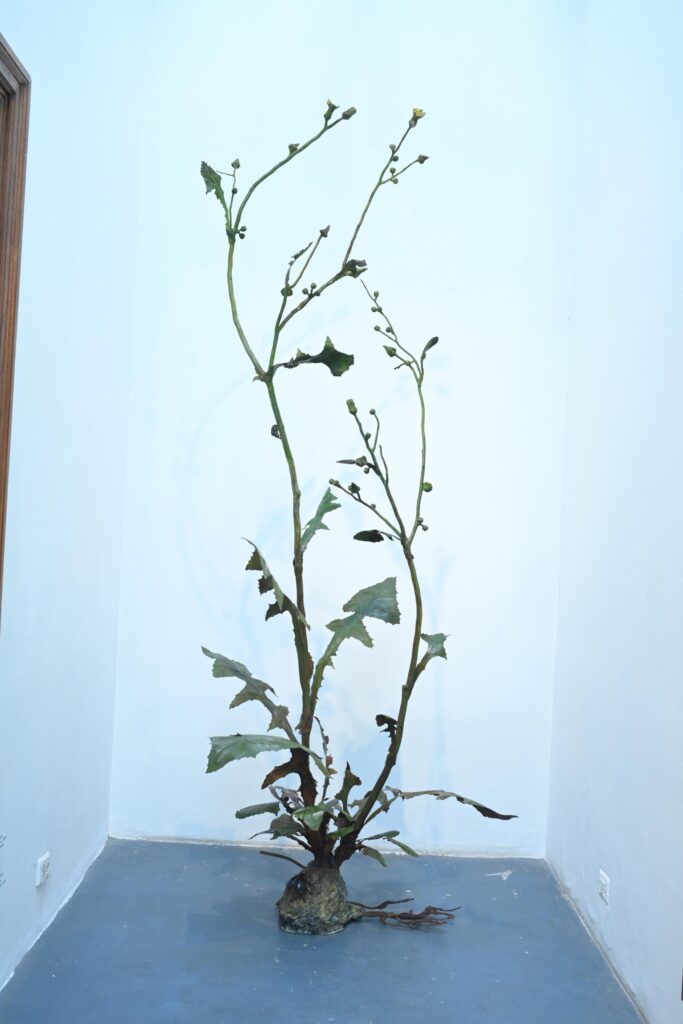
In the Silence of Bloom ( breathing spaces) by Deepak Kumar. Bronze, 138 x 60 inches, 2025
The premise allowed multiple threads to run in parallel. Themes of ecology and urbanism sat alongside explorations of gender and materiality, while formal abstraction conversed with works on identity, migration, and memory. This openness echoed the anniversary’s spirit, to reflect Exhibit 320’s history while looking forward.
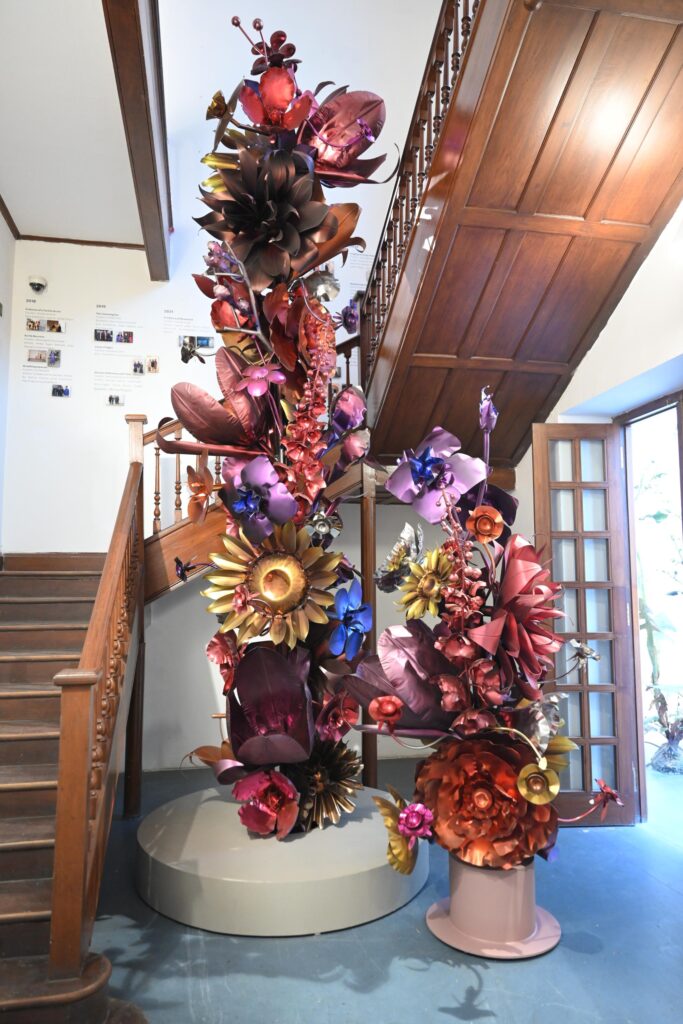
Floral Stack by Alex Davis. 304 grade stainless steel, 180 x 42 inches, 2025.
Artists Deepak Kumar, Alex Davis, and Kaushik Saha tackled ecological and urban realities: Kumar’s drawings and sculptures charted the fragile coexistence of nature within encroaching concrete landscapes; Davis transformed industrial metals into nature-inspired immersive forms; and Saha’s layered works combined textiles, urban detritus, and paint to trace cycles of destruction and renewal.
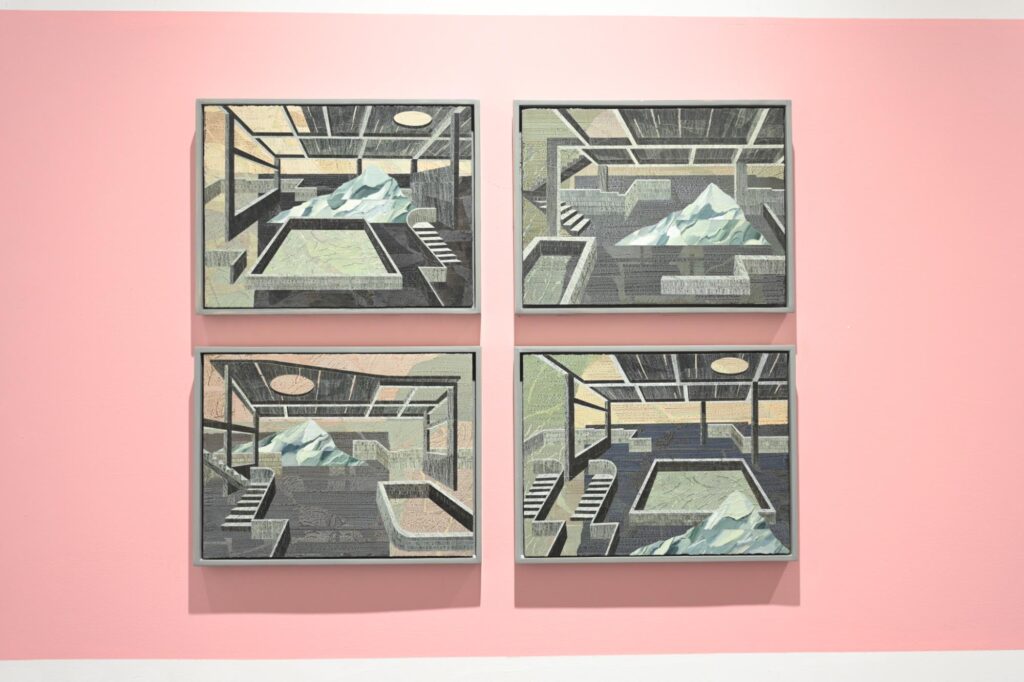
Searching home by Kaushika Saha. Acrylic on ply board, 12 x 16 inches each, 2025
Vibha Galhotra, Ayesha Singh, and Jagannath Panda amplified these conversations with pieces confronting environmental justice, architectural symbolism, and the uneasy relationship between myth and modernity.
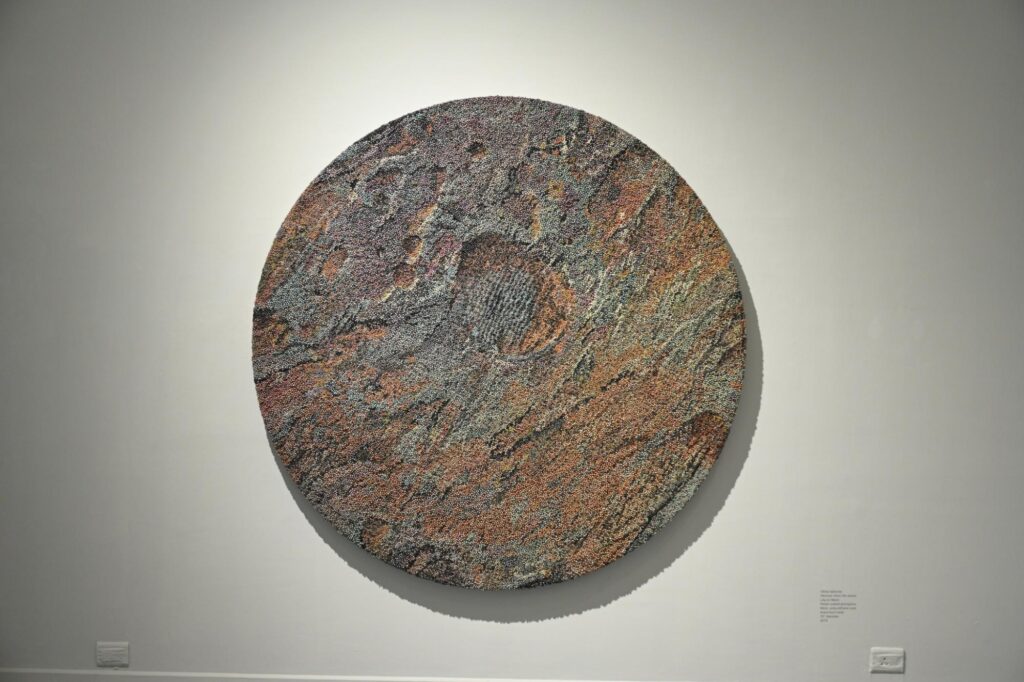
Alluvium (from the series Life on Mars) by Vibha Galhotra. Nickel coated ghungroos, fabric, polyurethane coat, board and metal, 72 inches diameter, 2019.
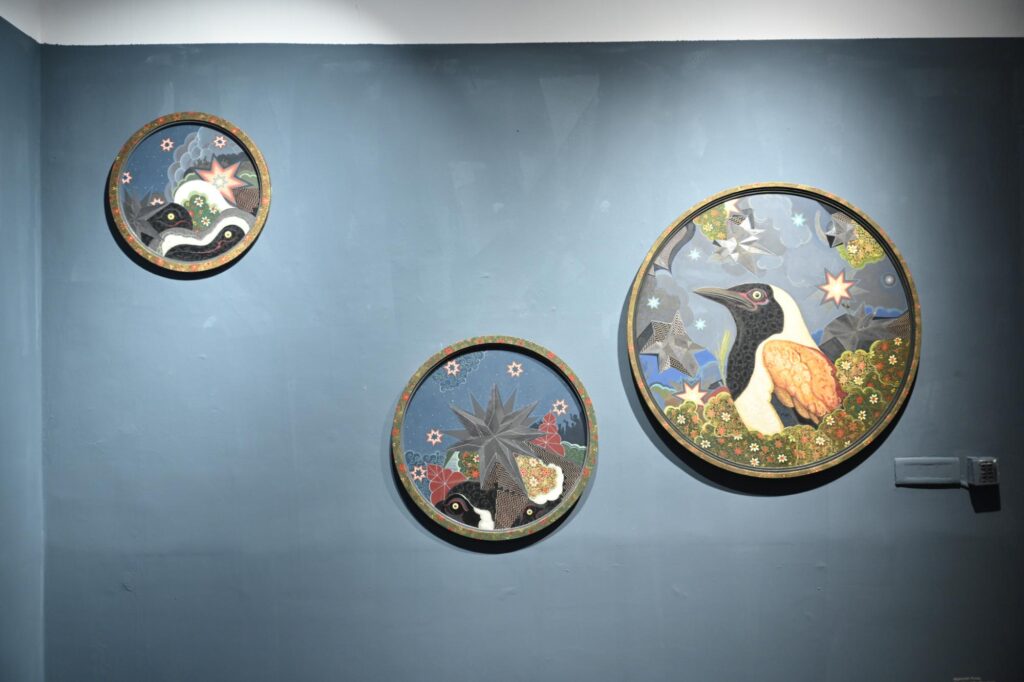
Guardian of the Threshold-I by Jagannath Panda. Acrylic, Fabric, auto paint, glue on plywood, 2019-25.
Material, Memory, and the Body
A significant current ran through works engaging gender and materiality. Lavanya Mani, Rakhi Peswani, and Yasmin Jahan Nupur used textile, gesture, and craft traditions to probe embodiment and the structures that define it. Mani’s dyed fabrics and botanical motifs revisited colonial trade histories, while Peswani’s installations reclaimed the so-called feminine domain of handwork as a site of political resistance. Nupur’s practice centred indigenous knowledge and slowness, using craft as an act of care and continuity.
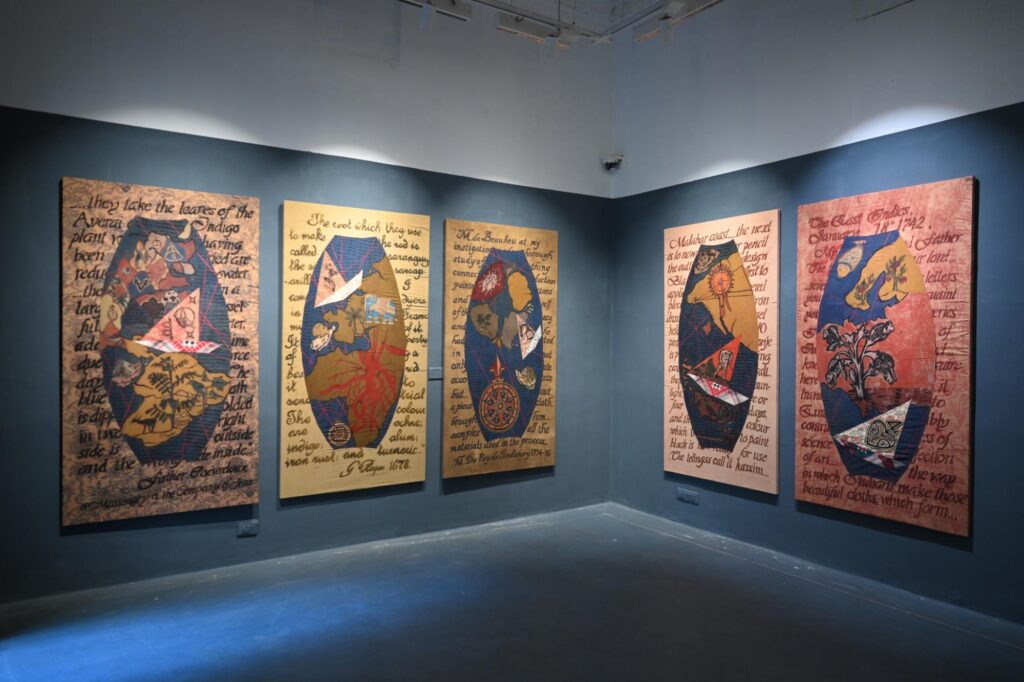
Lost Map- Fragments by Lavanya Mani. Natural dye, pigment paint, appliqué, and machine embroidery on cotton fabric. 72 x 36 inches each, 2012-13.
Anju Dodiya’s introspective watercolours drew viewers into staged spaces where personal emotions collided with myth and literature, while Shakuntala Kulkarni’s works on vulnerability and safety in public space brought a stark immediacy. Mithu Sen’s installations and performances, deploying absurdity and “non-language,” dismantled norms around identity and the body.
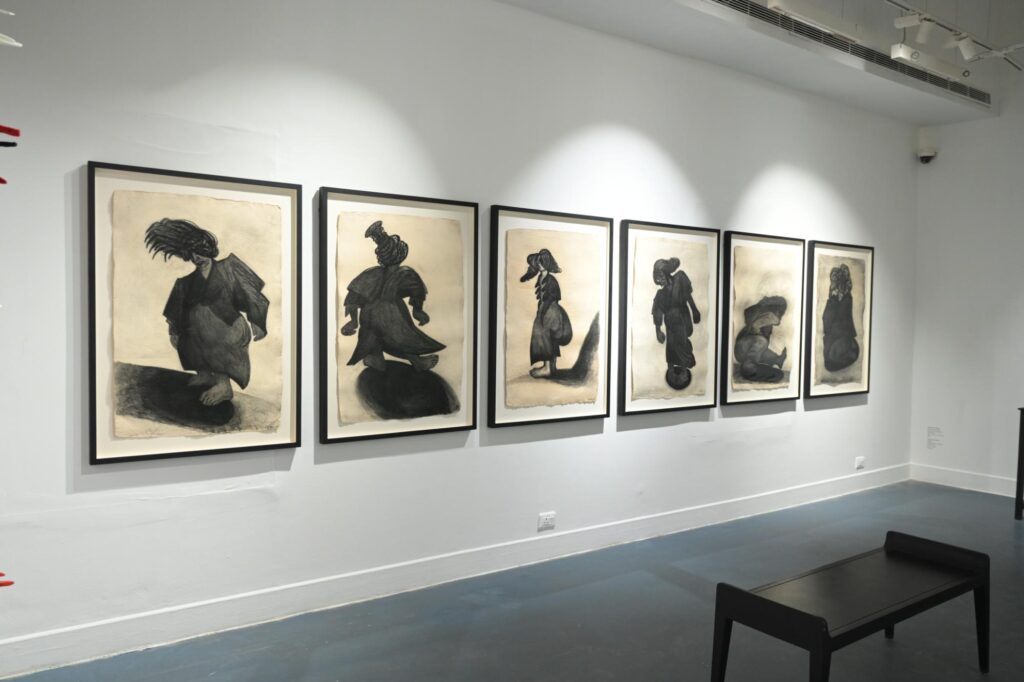
Stuck in the shadow by Shakauntala Kulkarni. Charcoal on handmade khadi paper, 49.5 x 35.5 x 1.74 inches each, 2021.
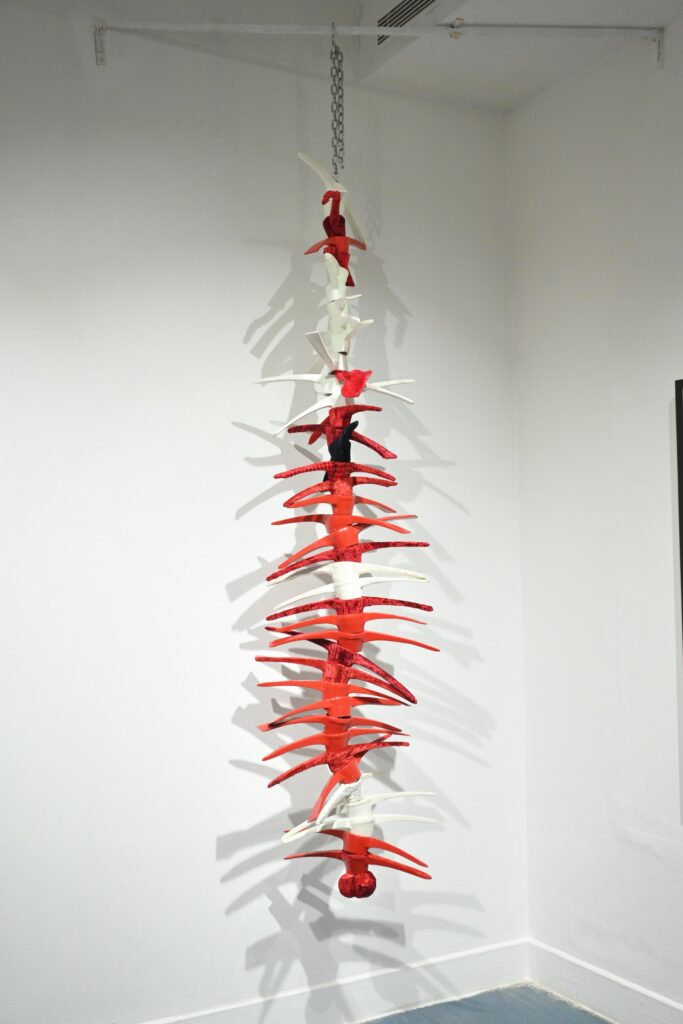
Non-Spinal by Mithu Sen. Iron Pickaxe, fiberglass, velvet, leather variable, 2025.
The exhibition also mapped South Asia’s rich abstraction lineage. Early pioneers like Prabhakar Kolte and Jeram Patel were shown alongside contemporary practitioners. Kolte’s spatial tensions and planar compositions reflected urban Indian modernism, Patel’s blowtorch-on-wood pieces embodied material audacity, and Gopi Gajwani’s rhythmic linework offered contemplative calm.
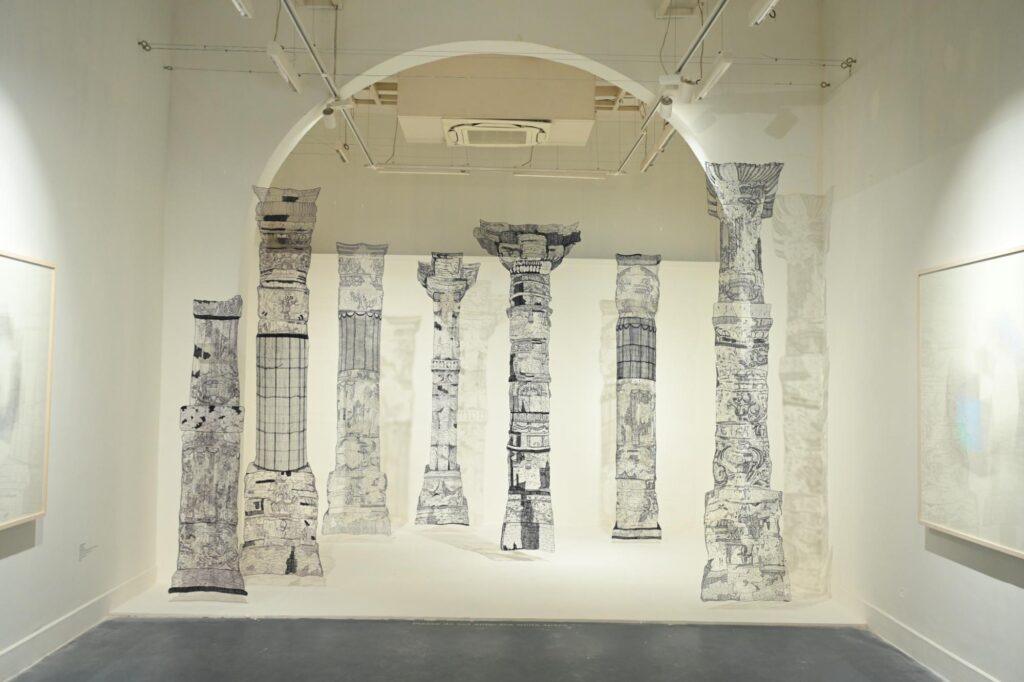
Monuments by Sumakshi Singh. Thread and lace, 2025.
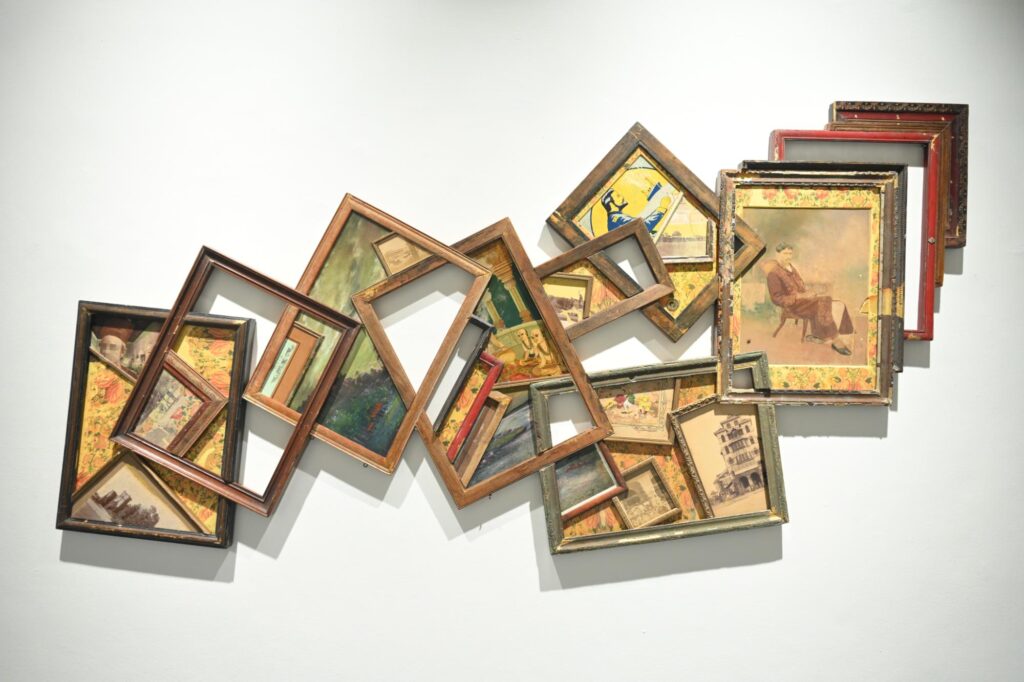
Babaji’s Haveli (Is it your history as much as mine) by Nandan Ghiya. Decoupage, acrylic & putty, found wooden frames, found photographs & advertisement, 84.5 x 40.25 x 2.5 inches, 2021-25.
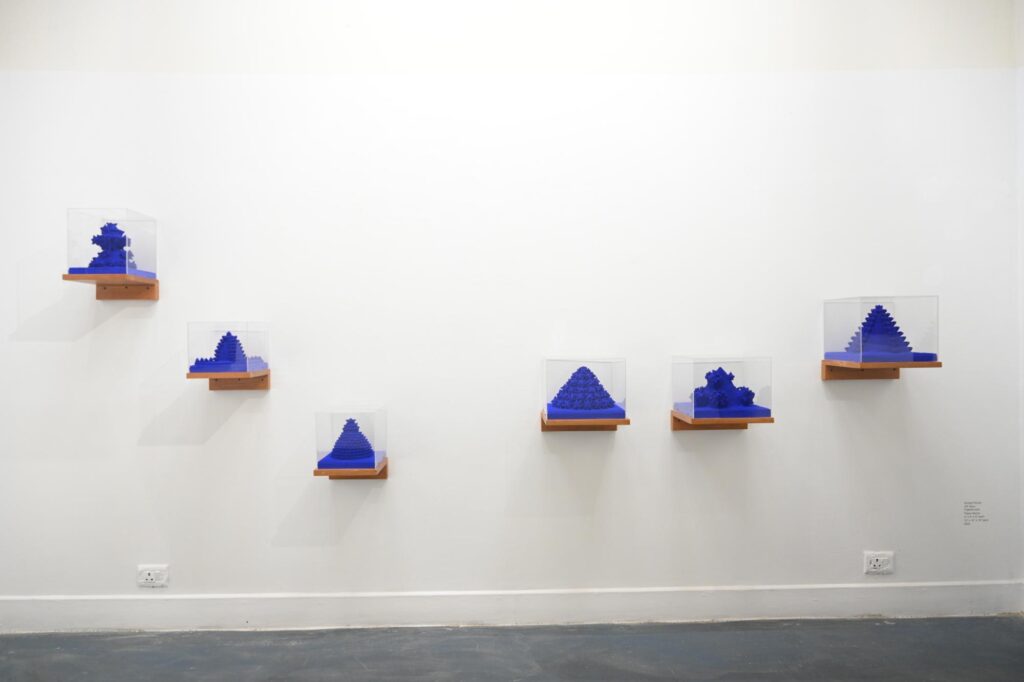
Sifr Blue by Gunjan Kumar. Pigment and Paper Mache, 9 x 9 x 9 inches each, 2025.
Artists such as Gunjan Kumar (pigment-coated canvases merging archaeology and abstraction), Kumaresan (minimalist reliefs exploring geometry and shadow), Sachin George Sebastian (sculptural paper works between floral and architectural forms), and Parul Gupta (immersive graphite environments) pushed formal boundaries into new sensory territories.
Memory, History, and Place
The show carried an undercurrent of memory as method. Ayesha Singh examined façades and monuments as bearers of political authority and Sumakshi Singh’s thread-and-shadow installations evoked the fragility of recollection. Nandan Ghiya disrupted photographic archives with digital interventions and sculptural hybrids to question fixed identity, while Kaushik Saha placed abandoned structures in stark landscapes to suggest inner desolation, and Gigi Scaria’s urban vistas mapped displacement.
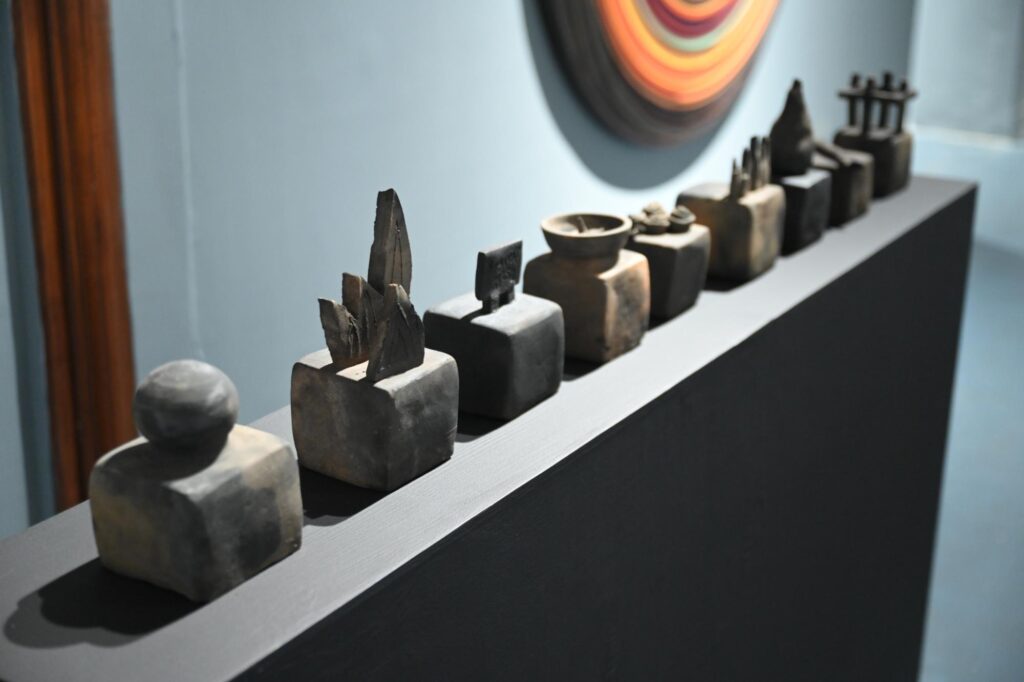
Relics by Rahul Kumar. Terracotta fired clay, 4 x 4 x 9 I 4 x 4 x 4 inches each, 2025.
Ecological narratives intertwined with personal and ancestral memory in Sonia Mehra Chawla’s microbial landscapes and Rahul Kumar’s contemplative text-object sculptures, while G. Iranna’s tactile paintings meditated on suffering, transcendence, and balance.
A Moment of Recognition
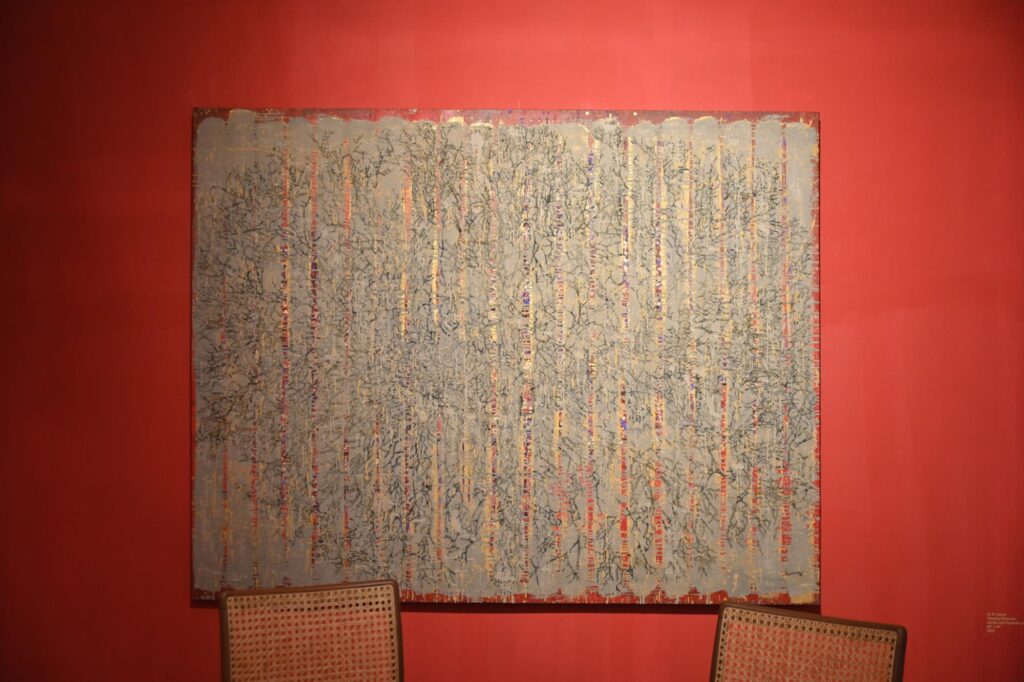
Floating Branches by G. R. Iranna. Acrylic and Tarpaulin on Canvas, 66 x 84 inches, 2025.
The exhibition coincided with a wave of recognition for the gallery’s artists. Sumakshi Singh was named a finalist for the Loewe Craft Prize 2025; Deena Pindoria won 1st place at the TAF Emerging Artist Award – South Asia in London; and Nandan Ghiya’s Manthan was featured at the Liverpool Biennial 2025.
For Rasika Kajaria, Founder-Director of Exhibit 320, the anniversary was an affirmation: “Fifteen years ago, Exhibit 320 was founded as a space for critical engagement, experimentation, and discourse… This exhibition honoured the artists who have been part of this journey, those who have challenged conventions, expanded conversations, and shaped how we understand art in and of this region today.”
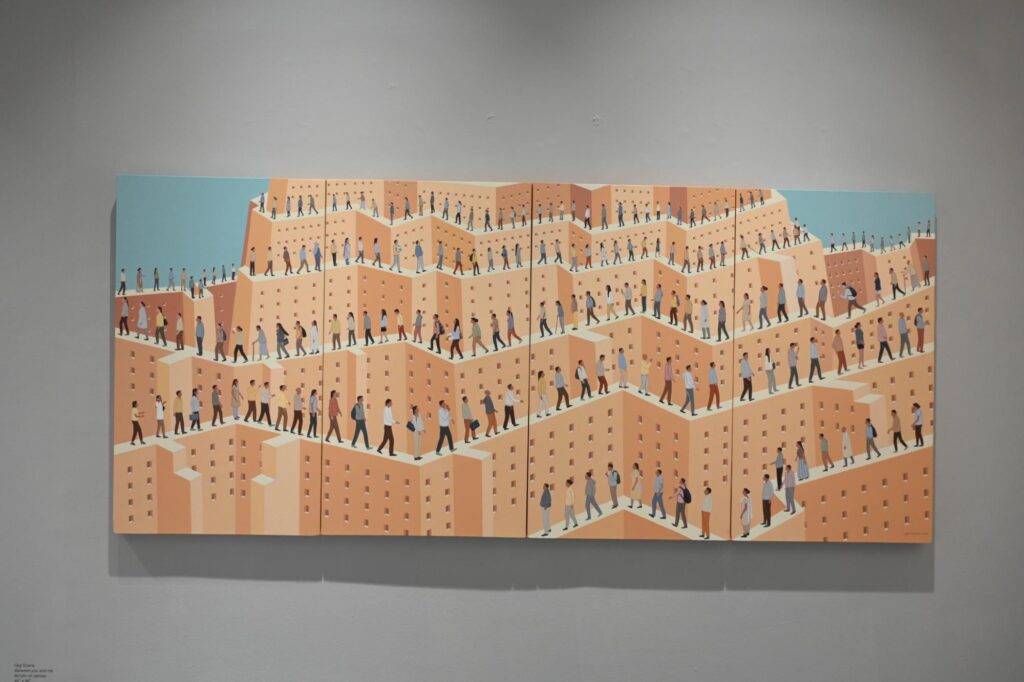
Between you and me by Gigi Scaria. Acrylic on canvas, 42 x 96 inches, 2025.
Shared Worlds as Proposition
Shared Worlds functioned as more than an anniversary showcase. Its dense layering of voices, mediums, and concerns created a living archive of the gallery’s past and a proposition for its future, an argument for exhibitions as dynamic, relational spaces where viewers are invited not only to look but to think, question, and connect.
In its refusal to settle into a singular narrative, the exhibition mirrored the complexity of the contemporary world it drew from. As Nath reflected, its multiplicity was its strength, a model for how art can hold contradiction without losing coherence, and how shared space can become a shared world.

